Josephine Griffith
What Makes a Meme a Meme? Identifying Memes for Memetics-Aware Dataset Creation
Jul 16, 2024Abstract:Warning: This paper contains memes that may be offensive to some readers. Multimodal Internet Memes are now a ubiquitous fixture in online discourse. One strand of meme-based research is the classification of memes according to various affects, such as sentiment and hate, supported by manually compiled meme datasets. Understanding the unique characteristics of memes is crucial for meme classification. Unlike other user-generated content, memes spread via memetics, i.e. the process by which memes are imitated and transformed into symbols used to create new memes. In effect, there exists an ever-evolving pool of visual and linguistic symbols that underpin meme culture and are crucial to interpreting the meaning of individual memes. The current approach of training supervised learning models on static datasets, without taking memetics into account, limits the depth and accuracy of meme interpretation. We argue that meme datasets must contain genuine memes, as defined via memetics, so that effective meme classifiers can be built. In this work, we develop a meme identification protocol which distinguishes meme from non-memetic content by recognising the memetics within it. We apply our protocol to random samplings of the leading 7 meme classification datasets and observe that more than half (50. 4\%) of the evaluated samples were found to contain no signs of memetics. Our work also provides a meme typology grounded in memetics, providing the basis for more effective approaches to the interpretation of memes and the creation of meme datasets.
Unimodal Intermediate Training for Multimodal Meme Sentiment Classification
Aug 01, 2023Abstract:Internet Memes remain a challenging form of user-generated content for automated sentiment classification. The availability of labelled memes is a barrier to developing sentiment classifiers of multimodal memes. To address the shortage of labelled memes, we propose to supplement the training of a multimodal meme classifier with unimodal (image-only and text-only) data. In this work, we present a novel variant of supervised intermediate training that uses relatively abundant sentiment-labelled unimodal data. Our results show a statistically significant performance improvement from the incorporation of unimodal text data. Furthermore, we show that the training set of labelled memes can be reduced by 40% without reducing the performance of the downstream model.
Meme Sentiment Analysis Enhanced with Multimodal Spatial Encoding and Facial Embedding
Mar 03, 2023Abstract:Internet memes are characterised by the interspersing of text amongst visual elements. State-of-the-art multimodal meme classifiers do not account for the relative positions of these elements across the two modalities, despite the latent meaning associated with where text and visual elements are placed. Against two meme sentiment classification datasets, we systematically show performance gains from incorporating the spatial position of visual objects, faces, and text clusters extracted from memes. In addition, we also present facial embedding as an impactful enhancement to image representation in a multimodal meme classifier. Finally, we show that incorporating this spatial information allows our fully automated approaches to outperform their corresponding baselines that rely on additional human validation of OCR-extracted text.
* Published as chapter in ISBN:978-3-031-26438-2
A Comparison of Automatic Labelling Approaches for Sentiment Analysis
Nov 05, 2022Abstract:Labelling a large quantity of social media data for the task of supervised machine learning is not only time-consuming but also difficult and expensive. On the other hand, the accuracy of supervised machine learning models is strongly related to the quality of the labelled data on which they train, and automatic sentiment labelling techniques could reduce the time and cost of human labelling. We have compared three automatic sentiment labelling techniques: TextBlob, Vader, and Afinn to assign sentiments to tweets without any human assistance. We compare three scenarios: one uses training and testing datasets with existing ground truth labels; the second experiment uses automatic labels as training and testing datasets; and the third experiment uses three automatic labelling techniques to label the training dataset and uses the ground truth labels for testing. The experiments were evaluated on two Twitter datasets: SemEval-2013 (DS-1) and SemEval-2016 (DS-2). Results show that the Afinn labelling technique obtains the highest accuracy of 80.17% (DS-1) and 80.05% (DS-2) using a BiLSTM deep learning model. These findings imply that automatic text labelling could provide significant benefits, and suggest a feasible alternative to the time and cost of human labelling efforts.
Mobility restores the mechanism which supports cooperation in the voluntary prisoner's dilemma game
Jul 11, 2019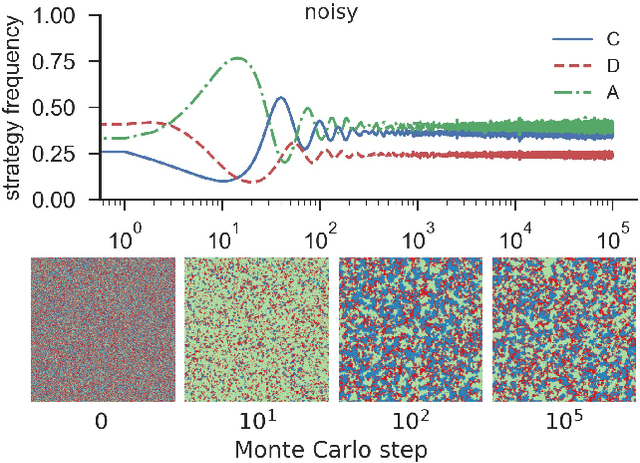
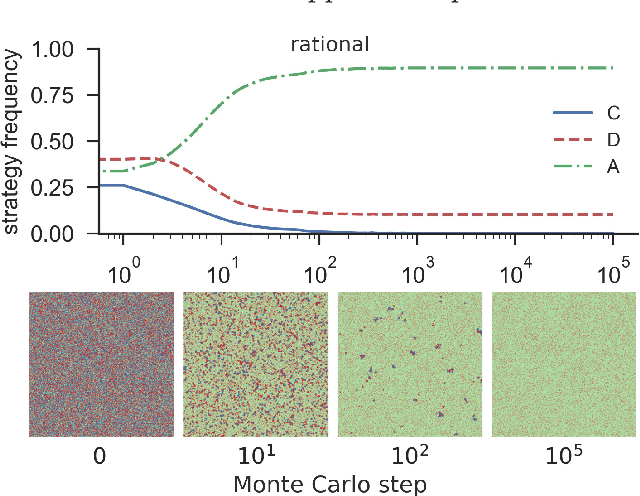
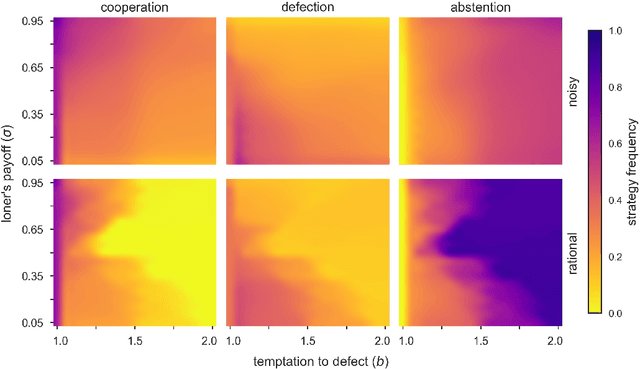
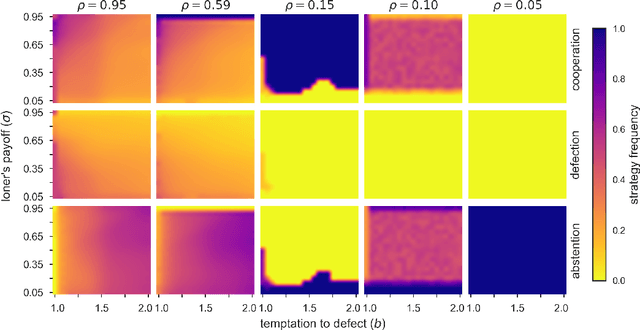
Abstract:It is generally believed that in a situation where individual and collective interests are in conflict, the availability of optional participation is a key mechanism to maintain cooperation. Surprisingly, this effect is sensitive to the use of microscopic dynamics and can easily be broken when agents make a fully rational decision during their strategy updates. In the framework of the celebrated prisoner's dilemma game, we show that this discrepancy can be fixed automatically if we leave the strict and frequently artifact condition of a fully occupied interaction graph, and allow agents to change not just their strategies but also their positions according to their success. In this way, a diluted graph where agents may move offers a natural and alternative way to handle artifacts arising from the application of specific and sometimes awkward microscopic rules.
Cooperation in the spatial prisoner's dilemma game with probabilistic abstention
Dec 10, 2018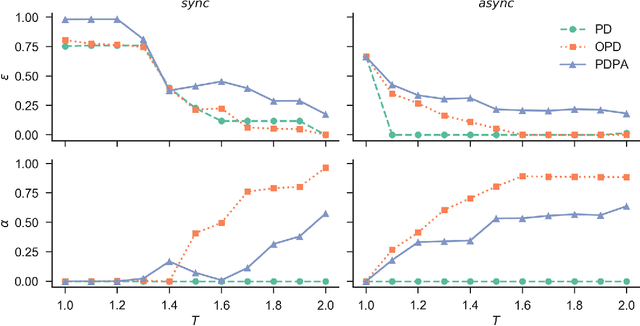
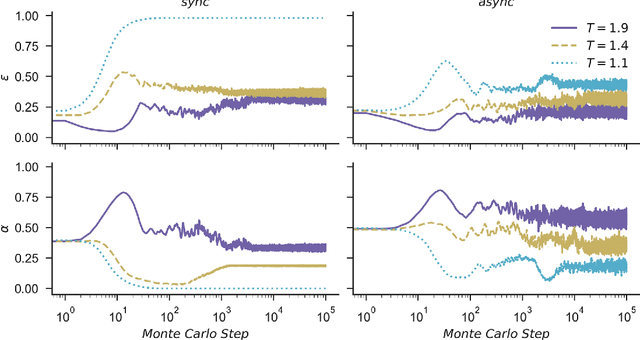
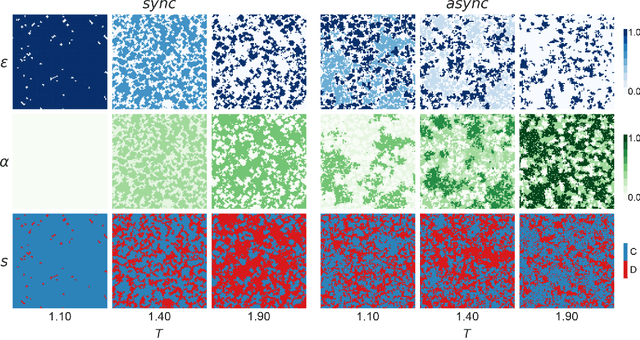
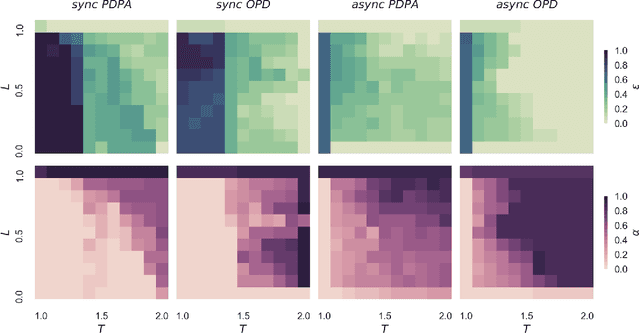
Abstract:Research has shown that the addition of abstention as an option transforms social dilemmas to rock-paper-scissor type games, where defectors dominate cooperators, cooperators dominate abstainers (loners), and abstainers (loners), in turn, dominate defectors. In this way, abstention can sustain cooperation even under adverse conditions, although defection also persists due to cyclic dominance. However, to abstain or to act as a loner has, to date, always been considered as an independent, third strategy to complement traditional cooperation and defection. Here we consider probabilistic abstention, where each player is assigned a probability to abstain in a particular instance of the game. In the two limiting cases, the studied game reverts to the prisoner's dilemma game without loners or to the optional prisoner's dilemma game. For intermediate probabilities, we have a new hybrid game, which turns out to be most favorable for the successful evolution of cooperation. We hope this novel hybrid game provides a more realistic view of the dilemma of optional/voluntary participation.
* 7 pages, 4 figures; published in Scientific Reports
Evoplex: A platform for agent-based modeling on networks
Nov 25, 2018
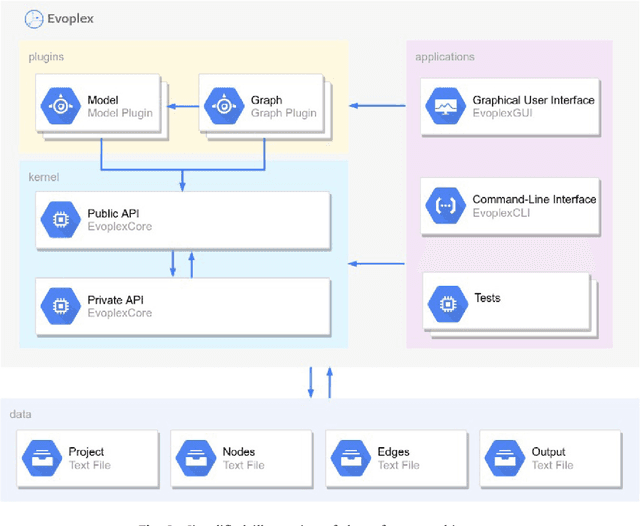
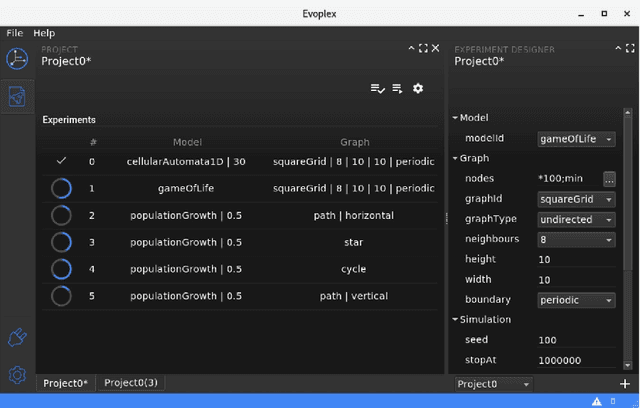
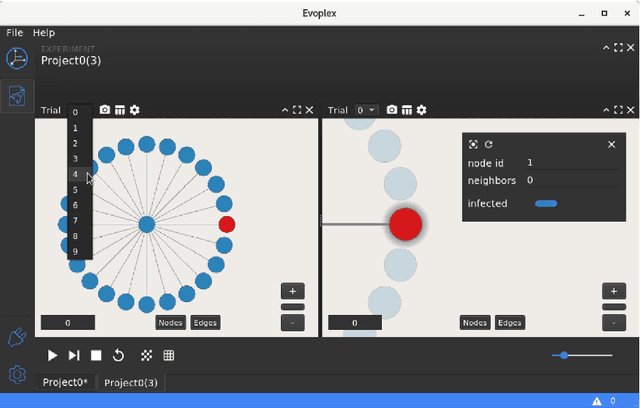
Abstract:Evoplex is a fast, robust and extensible platform for developing agent-based models and multi-agent systems on networks. Each agent is represented as a node and interacts with its neighbors, as defined by the network structure. Evoplex is ideal for modeling complex systems, for example in evolutionary game theory and computational social science. In Evoplex, the models are not coupled to the execution parameters or the visualization tools, and there is a user-friendly graphical user interface which makes it easy for all users, ranging from newcomers to experienced, to create, analyze, replicate and reproduce the experiments.
A Further Analysis of The Role of Heterogeneity in Coevolutionary Spatial Games
Nov 09, 2017
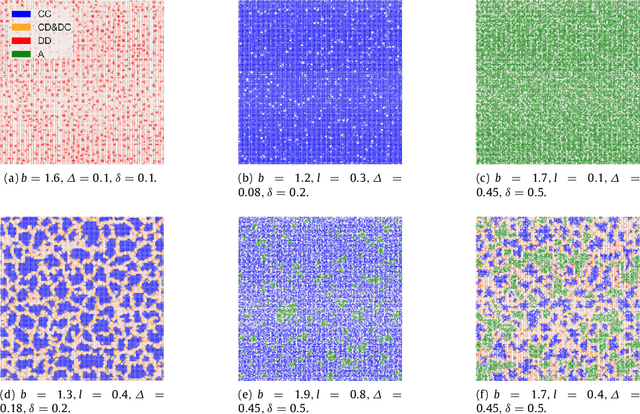
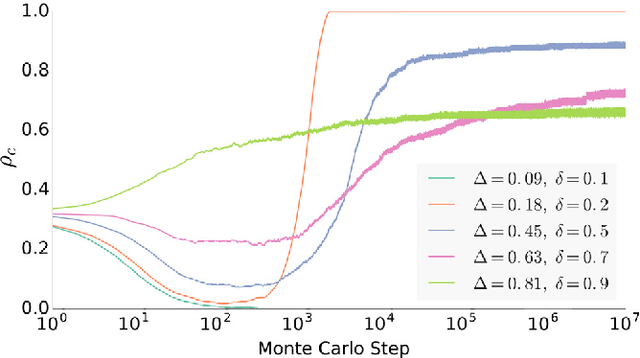
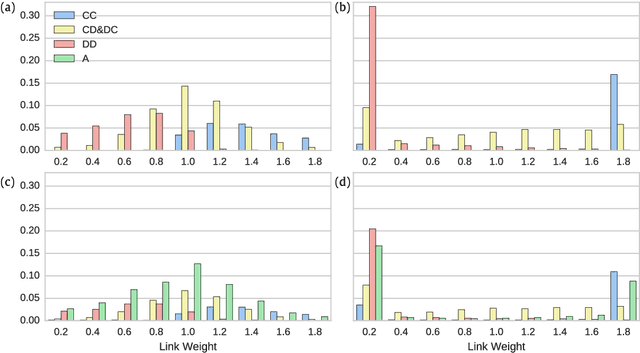
Abstract:Heterogeneity has been studied as one of the most common explanations of the puzzle of cooperation in social dilemmas. A large number of papers have been published discussing the effects of increasing heterogeneity in structured populations of agents, where it has been established that heterogeneity may favour cooperative behaviour if it supports agents to locally coordinate their strategies. In this paper, assuming an existing model of a heterogeneous weighted network, we aim to further this analysis by exploring the relationship (if any) between heterogeneity and cooperation. We adopt a weighted network which is fully populated by agents playing both the Prisoner's Dilemma or the Optional Prisoner's Dilemma games with coevolutionary rules, i.e., not only the strategies but also the link weights evolve over time. Surprisingly, results show that the heterogeneity of link weights (states) on their own does not always promote cooperation; rather cooperation is actually favoured by the increase in the number of overlapping states and not by the heterogeneity itself. We believe that these results can guide further research towards a more accurate analysis of the role of heterogeneity in social dilemmas.
The Impact of Coevolution and Abstention on the Emergence of Cooperation
Apr 28, 2017



Abstract:This paper explores the Coevolutionary Optional Prisoner's Dilemma (COPD) game, which is a simple model to coevolve game strategy and link weights of agents playing the Optional Prisoner's Dilemma game. We consider a population of agents placed in a lattice grid with boundary conditions. A number of Monte Carlo simulations are performed to investigate the impacts of the COPD game on the emergence of cooperation. Results show that the coevolutionary rules enable cooperators to survive and even dominate, with the presence of abstainers in the population playing a key role in the protection of cooperators against exploitation from defectors. We observe that in adverse conditions such as when the initial population of abstainers is too scarce/abundant, or when the temptation to defect is very high, cooperation has no chance of emerging. However, when the simple coevolutionary rules are applied, cooperators flourish.
The Optional Prisoner's Dilemma in a Spatial Environment: Coevolving Game Strategy and Link Weights
Sep 19, 2016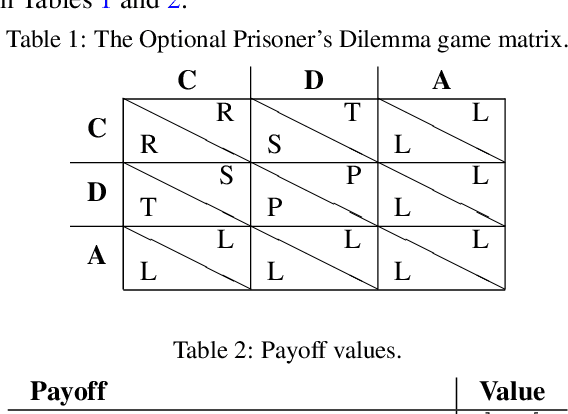
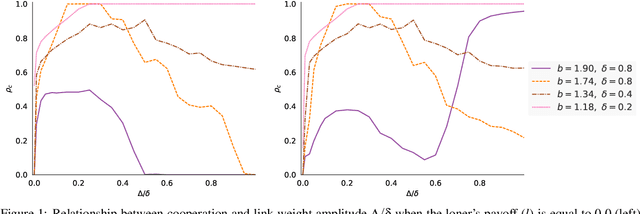
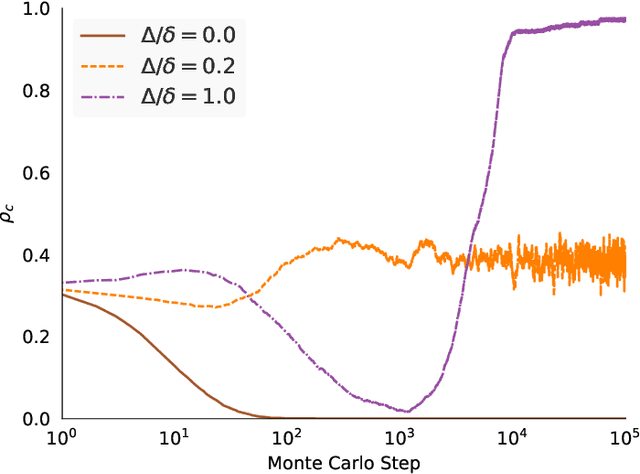
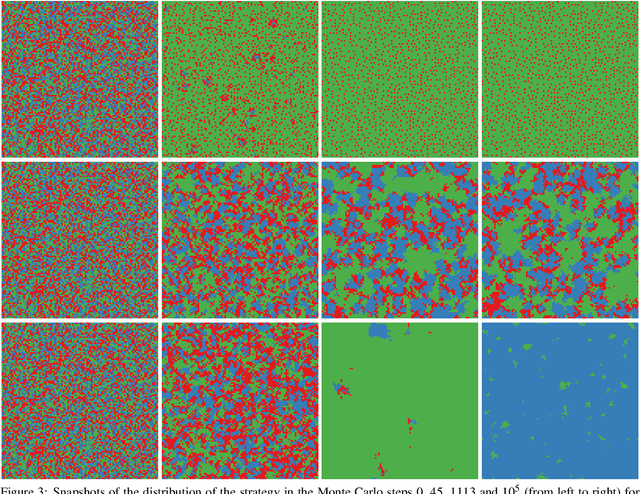
Abstract:In this paper, the Optional Prisoner's Dilemma game in a spatial environment, with coevolutionary rules for both the strategy and network links between agents, is studied. Using a Monte Carlo simulation approach, a number of experiments are performed to identify favourable configurations of the environment for the emergence of cooperation in adverse scenarios. Results show that abstainers play a key role in the protection of cooperators against exploitation from defectors. Scenarios of cyclic competition and of full dominance of cooperation are also observed. This work provides insights towards gaining an in-depth understanding of the emergence of cooperative behaviour in real-world systems.
* To be presented at ECTA 2016, Porto, Portugal
 Add to Chrome
Add to Chrome Add to Firefox
Add to Firefox Add to Edge
Add to Edge